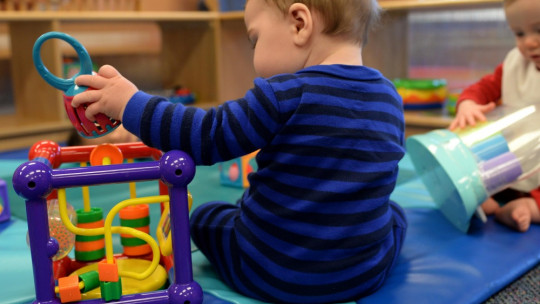At Christmas, the custom of giving gifts to the little ones in the house has become both a tradition and, sometimes, a form of social pressure towards consumerism. In this article We will focus on how the so-called rule of the 4 gifts helps us deal with this phenomenon
Does consumerism equal happiness?
It is undeniable that we live in a time where consumerism plays a central role in the organizational system of today’s society. A time in which the different media overwhelm us with their advertising and messages that lead us to think that having more and more products, even if they are unnecessary, will contribute to our well-being.
Nothing is further from reality; The research that experts in the study of happiness such as Martin Seligman have carried out so far indicates that There are three main factors that contribute to an overall feeling of happiness and personal satisfaction :
On the one hand, there is the enjoyment linked to the experiences lived with the people around us, which causes an increase in the most pleasant emotions such as joy, calm, excitement (for example, traveling, listening to music, playing sports, etc.).
For the other, the pleasure derived from carrying out those activities that are particularly satisfying and that reduce the level of anxiety (such as taking dance classes, painting, writing, etc.).
Finally, we find the positive sensations derived from putting into practice those personal values that favor the achievement of social goals at a macro level, such as generosity, honesty, integrity, etc.
It can be seen, in this way, that the values defended by capitalism do not seem to have much relationship with these three mentioned aspects. Capitalism is positioned rather in promote attitudes such as competitiveness, individuality or the primacy of material things ; so that an addictive spiral is created towards these latter phenomena, which are diametrically opposed to what Seligman exposes.
Christmas gifts: the rule of 4 gifts
All previous It seems to have a special relevance during the Christmas season , since this celebration is closely linked to shopping and gifts. For this reason, and with the aim of rescuing a less consumerist, more supportive, sustainable and generous spirit, many experts in child psychology remember year after year how interesting and pedagogical it can be to apply the so-called “rule of 4 gifts” in presents that adults give to the little ones at home.
This practice allows, on the one hand, considerably reduce the volume of gifts that children receive , which is a good exercise to learn to more consciously value the effort involved both when making it and when it comes to deserving it. On the other hand, the rule of four gifts implies reformulating what type of gifts are going to be selected, giving a pedagogical meaning to each of them. Thus, it is not about accessing the four gifts requested (or imposed) by the child, but rather these must conform to the following premises:
1. The practical
Something that you can carry and that is useful, like an item of clothing or an accessory.
2. What is necessary
Something you really need such as an object that you use for your school or extracurricular activities.
3. What you want
Something they want, as long as it is appropriate for the child’s age. In this case, it is advisable to ask the child to make two or three proposals and the adult to choose from among them the one that best suits the family circumstances. An important note may be to consider the behavior and effort (and not exclusively the final academic grades) of the child both in the school environment and in the family and social environment.
4. What educates
Books and/or educational experiences shared with the family, such as a cultural excursion, a visit to a museum, etc. As for books, it seems positive that they are the ones who have priority when deciding which title to select in such a way that the child’s receptivity to this type of gift is increased.
The gifted child syndrome
Following the previous principles, it is promoted to combat the so-called “hyper-gifted child syndrome”, which is defined by a set of harmful attitudes and emotional consequences that can develop in children. children who receive too many gifts
As the enthusiasm and value given to the gift is diminished, capricious and selfish behaviors are encouraged to appear; Overstimulation is promoted in the face of so many gifts that he cannot attend to (which causes him to end up using a very small percentage of the total gifts) in addition to the negative implications in the medium and long term that overstimulation entails in the minor, interfering in attention and concentration capacity; Finally, the low ability to tolerate frustration increases, since the child is denied the possibility of carrying out emotional work that allows him or her to accept and adaptively assume that sometimes, desires or expectations may not be met.
In conclusion
As we have seen, it seems essential to carry out a process of reflection and awareness at this time of year when some practices are socially encouraged that may have a detriment to the ethical and educational values that adults transmit to their offspring. In this sense, the rule of four gifts It has a significant number of psychological and pedagogical benefits in its application both for the older and the younger.









